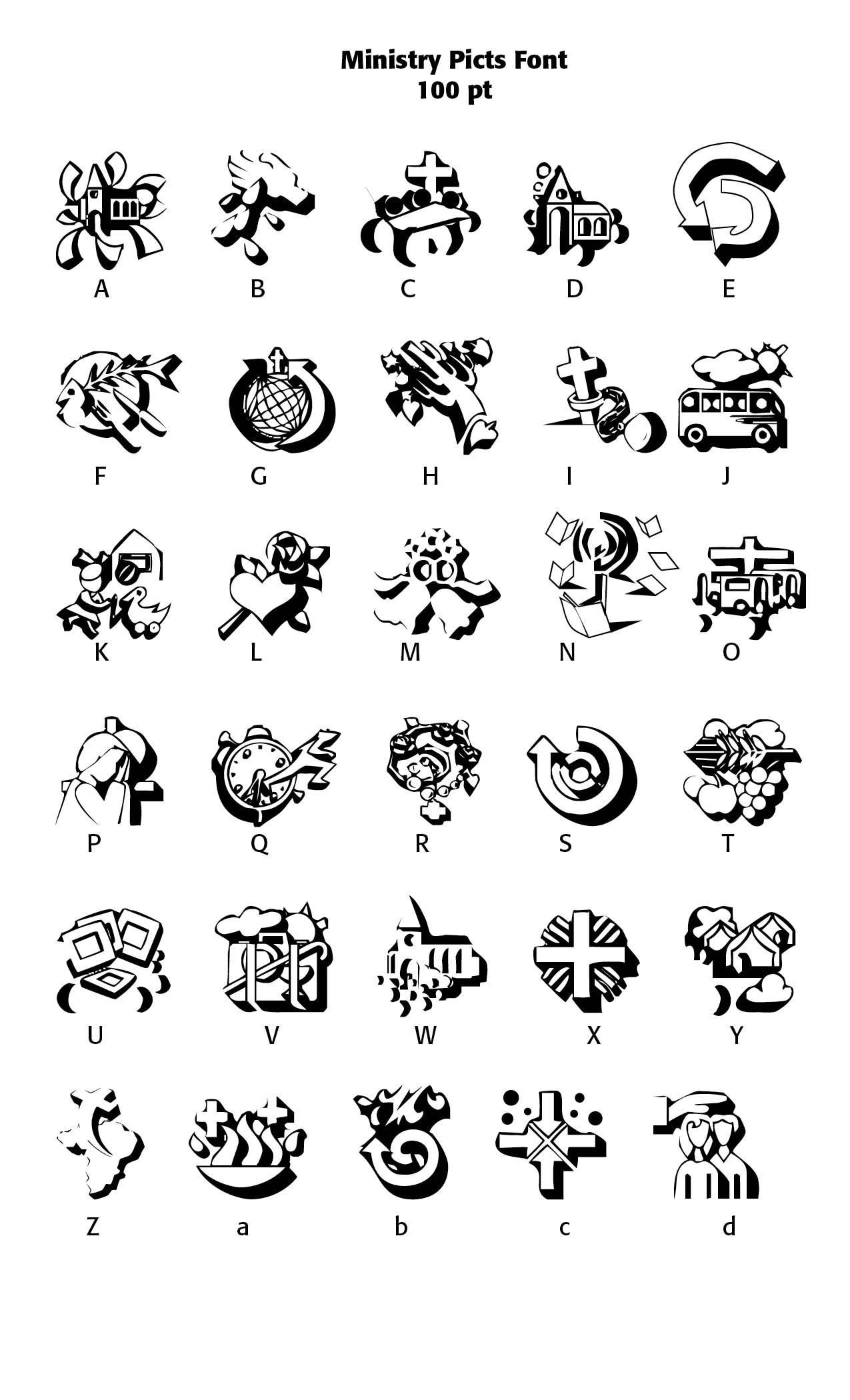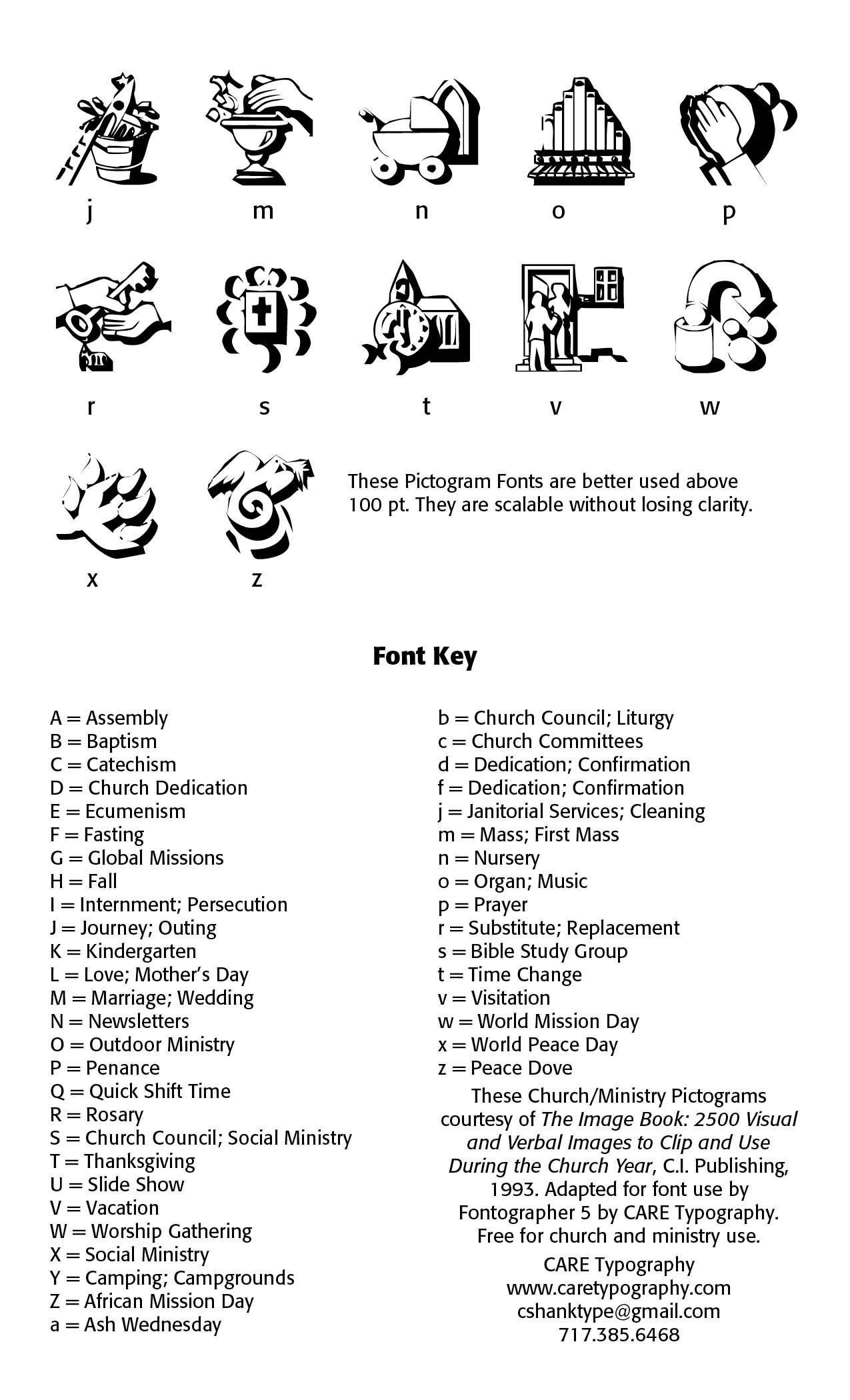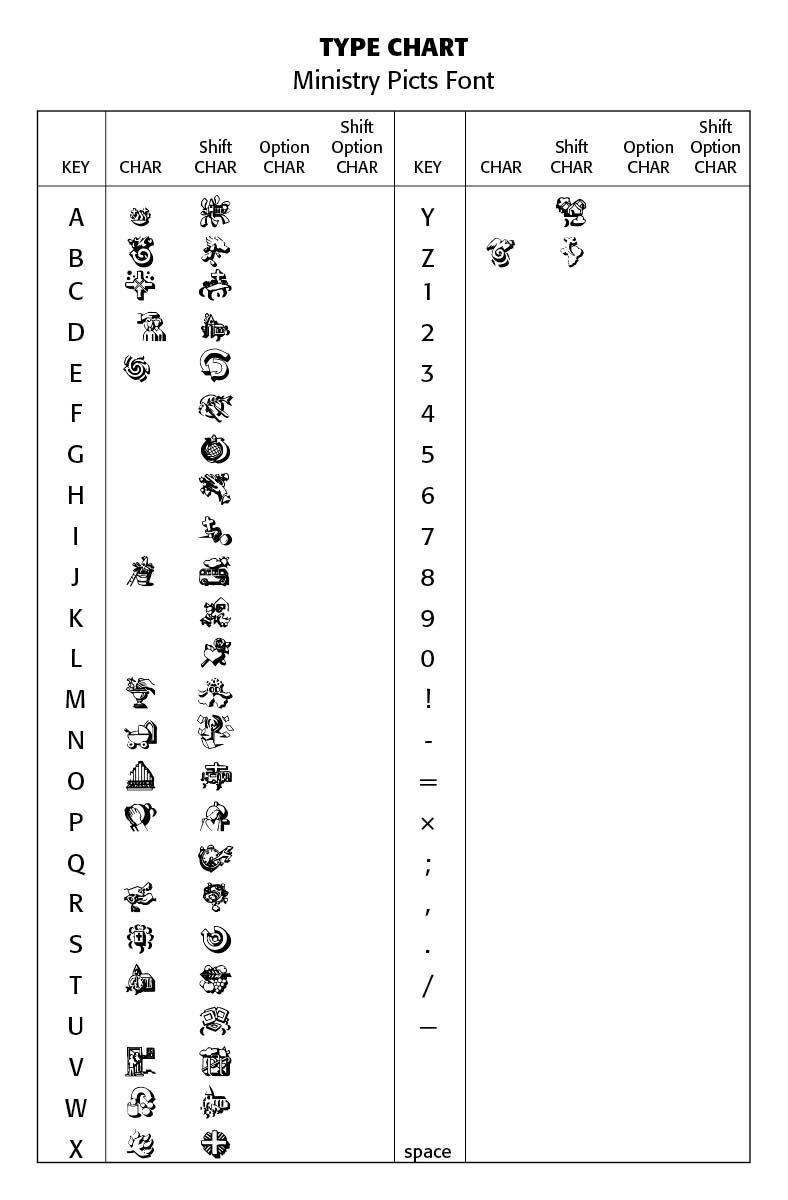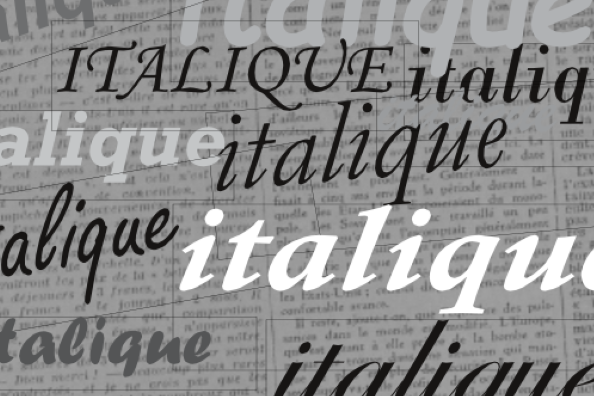A New Church/Ministry Font
A New Ministry/Church Font. CARE Typography is pleased to release a new church/ministry font for use by non-profits and churches as well as ministry venues. This font is FREE to all such ministries.
The Ministry Picts Font was adapted from Pictograms found in The Image Book: 2,500 Visual and Verbal Images To Clip and Use During the Church Year (C.I. Publishing, 1993). This image book was originally designed for image copying and use by church and ministry organizations. Developed thirty years ago for copying images for newsletter and other church uses, we found a number of Pictograms that can be updated and adapted for use by religious organizations. While no doubt dated, these Pictograms can add spice to your newsletters and church articles. Think of them as "retro" images.
Some of the Pictograms offered in the Image Book are suitable for font development. We have used Fontographer 5 after cleaning up the images and making them suitable for typeface use. Since these Pictograms are now in font form, they can be sized and used most anywhere in church and ministry publications without concern for readability or clarity. CARE Typography recommends sizing at 100 points or higher for quality use.
You can secure your copy of the font by emailing CARE Typography at cshanktype@gmail.com. Enjoy them!




Successful Layout & Design



